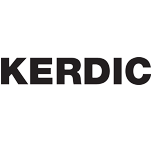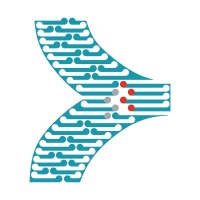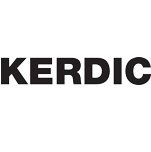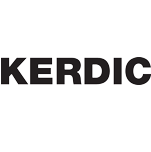Information
-
Client
-
Address
-
Competent Person
-
Conducted on
-
Prepared by
Job Hazard Analysis
-
Job Hazard Analysis required for this project?
-
Has JHA been completed
-
Is the JHA appropiate for the scope of work?
Access / Egress
-
Portable Ladders (if not checked than N/A)
-
Ladder extends 3' over landing
-
3 points of contact maintained while climbing
-
In good safe working condition. Proper ladder for the job.
-
Ladder set up at proper angle (4:1)
-
Ladders removed when leaving site if not secured
-
Ladder tied off securely
-
Other
-
Add media
-
Fixed Ladders (if not checked than N/A)
-
Fall protection or cage available if 24' in height or greater
-
If cage or well is used, landing platform is provided at maximum of 50'
-
Minimum clearance between ladder and obstruction behind is 7"
-
Inside of cage or well is free of obstructions
-
Ladder in good repair, no visible damage
-
Other
-
Add media
-
Stepladders (if not checked than N/A)
-
Stepladders in good repair. No visible damage to rails, rungs, or spreader
-
Ladder used in an open a-frame position
-
Proper ladder size used. Climbing on top of stepladder, or on first rung from the top, is prohibited
-
Other
-
Add media
-
Stairs (if not checked than N/A)
-
Metal pan stairs are filled with with suitable material or barricaded to prevent access
-
Stairways with four or more risers, or rising more than 30" in height (whichever is less) have stair rails provided on each unprotected edge
-
Handrails are provided between 30" and 37", have at least 3" clearance between the handrail and structure behind, and are constructed so as to provide an adequate handhold
-
All railings are free from projection hazards such as nails, surfaced to prevent injuries or snagging of clothing
-
Other
-
Add media
-
Other
-
Add media
Electrical Safety
-
GFCI utilized at all times
-
Cords and tools in good condition. Damaged cords / tools tagged out of service or rendered inoperable
-
All ladders and equipment at least 10' from electrical lines
-
All cords protected from damage
-
Other
-
Add media
Fall Protection
-
Warning Line Systems (if not checked than N/A)
-
Warning lines completely enclose the roof area
-
Warning lines kept minimum of 6' from edge of roof, or minimum of 10' from edge of roofs with mechanical equipment in use
-
Well maintained, a minimum of 34" off the working surface, a maximum of 39"
-
Stanchions utilized are designed to resist, without tipping over, a force of at least 16 lbs applied horizontally 30" above the walking / working surface
-
Employees adhering with requirement and remaining inside warning lines unless using a different fall protection system
-
Points of access connected to work area by access path formed by two lines. When not in use, a warning line is run across the path to fully enclose the work area
-
Guardrails System (if not checked than N/A)
-
Top rail 39-45 inches above the walking working surface. Cable deflects 3" or less and does not sag below 39" with 200lbs of force applied. Midrails installed midway between top rail and walking / working surface
-
Guardrail system properly installed capable of withstanding 200lbs of force
-
Standard toe boards installed if exposure below exists
-
Guardrails surfaced to prevent injury. No protruding nails
-
Safety Monitoring System (if not checked than N/A)
-
Safety monitor in audible & visual distance, on same working level and performing monitoring duties only
-
Safety monitor educated to recognize fall hazards and aware of items that he/she should be looking for
-
Monitor used in conjunction with warning line, except for on roofs that are <50' in length or width
-
Employees ensuring a safety monitor is present prior to going outside warning lines or working on an unprotected roof
-
Personal Fall Arrest Systems (if not checked than N/A)
-
Anchorage points of suitable strength to support fall or restraint (5,000lbs arrest, 3,000lbs restraint)
-
Equipment inspected prior to use
-
Harness & lanyards worn and adjusted properly. Lifelines installed properly, slack removed, pendulum effect and free fall distance considered and controlled
-
Anchorage connectors such as cross arm straps utilized to wrap units / structures. No wrapping of lifelines / lanyards and hooking them back to themselves
-
Skylight and hole protection (if not checked than N/A)
-
Skylight / holes protected by guardrail, cover, net, or personal fall arrest system is used
-
Hole covers capable of withstanding twice the intended load. "Hole" or "Cover" painted atop the cover
-
Hoist area fall protection (if not checked than N/A)
-
Guardrails or PFAS utilized in hoisting areas (areas where material / debris / equipment is being brought up to or removed from roof)
-
Employees using PFAS in hoist areas set them up for fall restraint
-
Other
-
Add media
Fire Prevention
-
Extinguishers in place, charged and in work area. Clear of obstruction. No more than 100' from employees, no more than 50' from flammables
-
No smoking near flammables
-
Proper flammable safety cans in use
-
Other
-
Add media
General Safety
-
First aid kits available onsite
-
SDS available onsite for all chemicals, chemicals properly labelled
-
Weekly tool box talks conducted
-
General housekeeping efforts kept up
-
All materials and debris secured daily. Public protected from falling / flying objects
-
General precautions taken to protect property from damages
-
Intakes covered or turned off when chemicals used
-
Other
-
Add media
Hand and Power Tools
-
All hand and power tools in good repair. Damaged equipment tagged out of service or rendered inoperable
-
All power tools have proper machine guards in place
-
Hand tools used for the task they are designed for. No prying items with a utility knife
-
Utility knife blades kept sharp, cuts made away from body. Retracted or fully sheathed when not in use
-
Other
-
Add media
Material Handling
-
Proper lifting techniques observed. Team lifts or mechanical equipment used when lifting heavy objects
-
Material handling equipment in good condition
-
Debris removed of promptly and safely. Chute provided when over 20'.
-
Crane Safety (if not checked than N/A)
-
Operators licensed / certified
-
Rigging in good condition. Capacities legible. Inspected prior to use with no visible damage.
-
Qualified rigger / signal person used
-
Outriggers fully deployed, pads/cribbing used on soft surfaces
-
Daily inspection of crane performed. Must be documented at least once per month and available on crane
-
Work zone established. Elevated visual aids in place to ensure crane maintains minimum approach distance from overhead power lines
-
Forklift Safety (if not checked than N/A)
-
Operator certified. License available and current (not more than 3 years old)
-
Daily inspection completed. All critical safety elements in good repair (back up alarm, windows & mirrors, boom angle indicator, load chart available, tires in good repair, etc)
-
Seatbelt worn at all times
-
Safe speeds maintained
-
Other
-
Add media
Personal Protective Equipment
-
Eye protection worn when hazard exits and per policy
-
Hard hats worn when hazard exits and per policy
-
Proper gloves worn when handling tear off debris, when handling sharp metal, and when handling chemicals requiring glove usage
-
Proper work attire worn (boots, pants, sleeved shirts, long sleeve shirts if handling hot asphalt)
-
Other
-
Add media
Scaffolding
-
Supported Scaffolding (if not checked than N/A)
-
Competent person onsite - daily inspections conducted
-
All components in good condition, properly assembled
-
Safe access onto scaffold available
-
Guardrails and toeboards on all open sides of work area
-
Work platform fully decked with proper overhang / cleating of planks
-
All employees using have user training
-
Scaffold kept a safe distance (10' minimum) from overhead powerlines unless lines have been de-energized or other acceptable safeguards implemented
-
Falling object protection adequate if exposure below exists. Toe boards in place, or netting used if material stacked higher than toe boards
-
Aerial Lifts (if not checked than N/A)
-
All employees using have received user training
-
Inspections performed prior to operating. No dropoffs, depressions, holes, etc. surrounding the equipment that can be driven into
-
Guardrails in proper working condition. Safety chains latched closed on scissor lifts. Swing gates shut on boom lifts
-
Proper fall protection in place when working from boom lift. Retractable lanyard or other restraining device used. Harness worn properly
-
Equipment kept a safe distance from overhead powerlines (minimum of 10' unless power lines are de-energized or other acceptable safeguard is implemented)
-
Other
-
Add media
Specialty Roof Systems
-
Modified Bitumen - Torch Applied System (if not checked than N/A)
-
Torch set up properly, in good working order. Stand in place. Connections and fittings leak checked prior to use
-
All sparks or open flame controlled and kept away from roof openings which could suck flame into structure
-
No torching to combustible surfaces
-
BUR - Kettle Safety (if not checked than N/A)
-
Propane tanks upright, in good condition and kept 10' from kettle & building
-
Kettle area flagged / barricaded
-
Proper temperature maintained. Ground man present and aware of temperature and flashpoint
-
Kettle lid closed when not being loaded
-
Other
-
Add media
Jobsite Grading
-
Job sites that have a Needs Improvement rating will require an email directly to the contract point of contact.
Follow -Up
-
Any score which falls below a 80 will require a safety meeting on site.
Safety Meeting
-
Safety Meeting Completed>
- Yes
- No
-
Safety Meeting Topic
-
Personnel in attendance
Sign Off
-
On site representative
-
Auditor's signature













